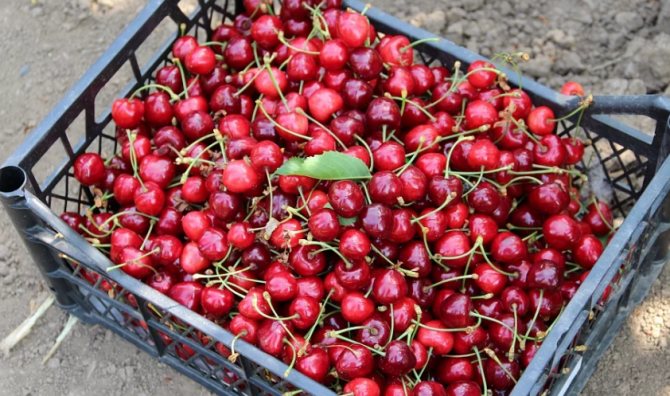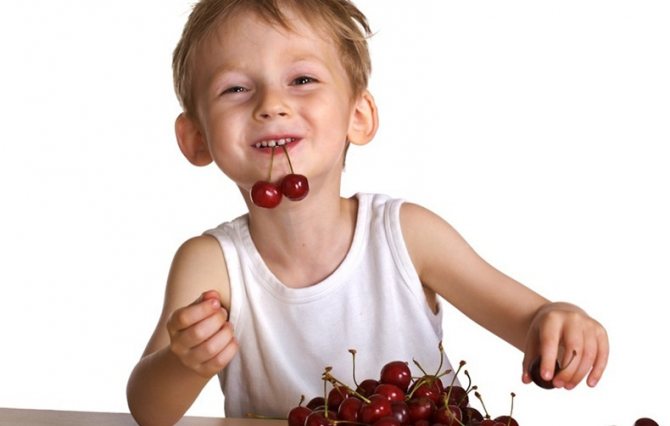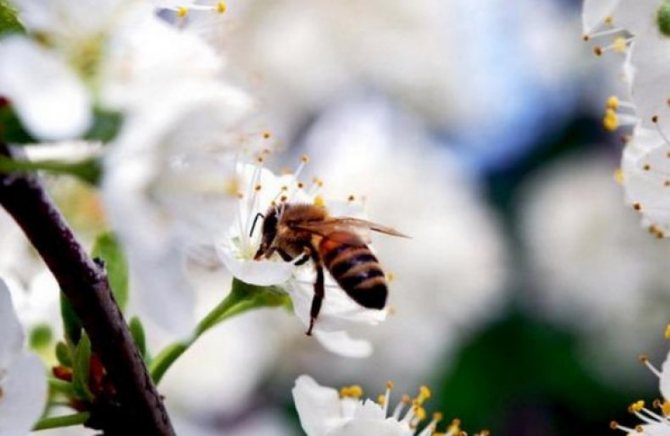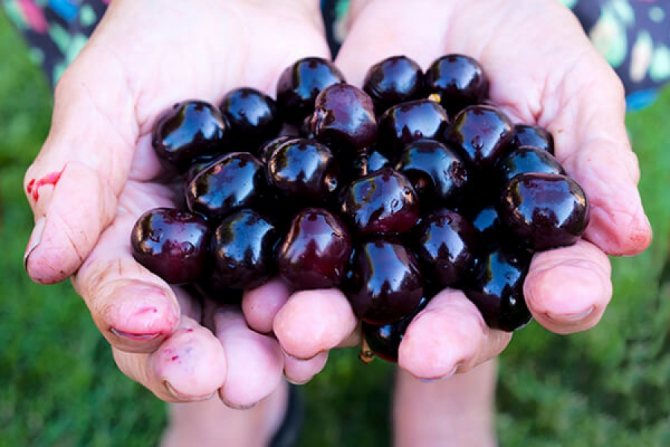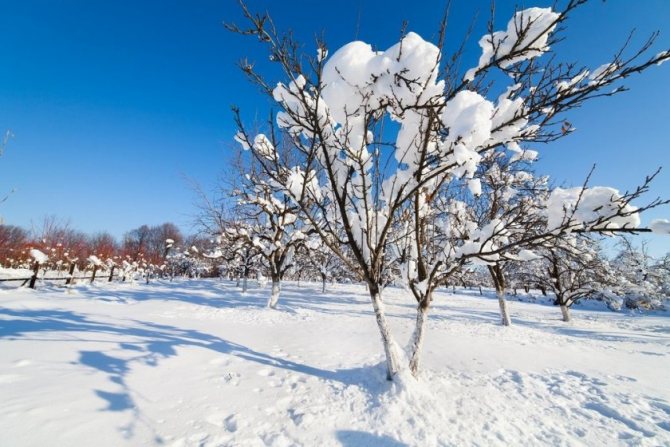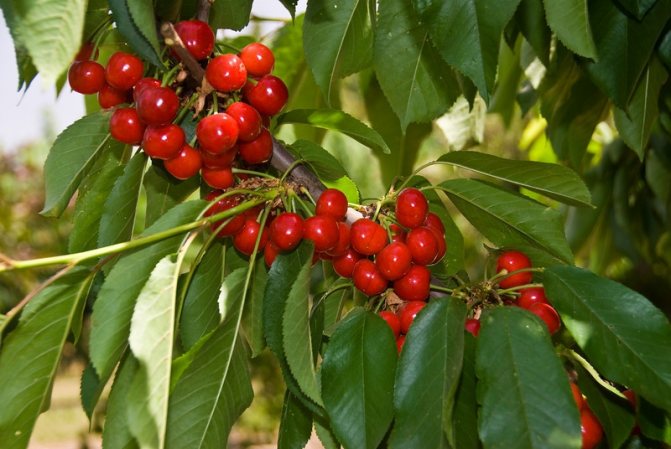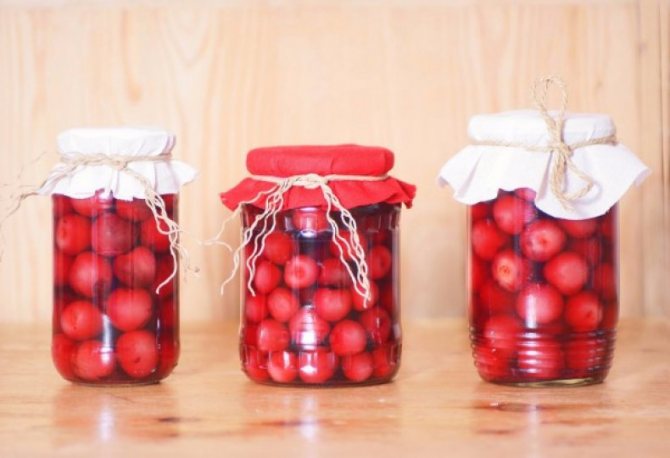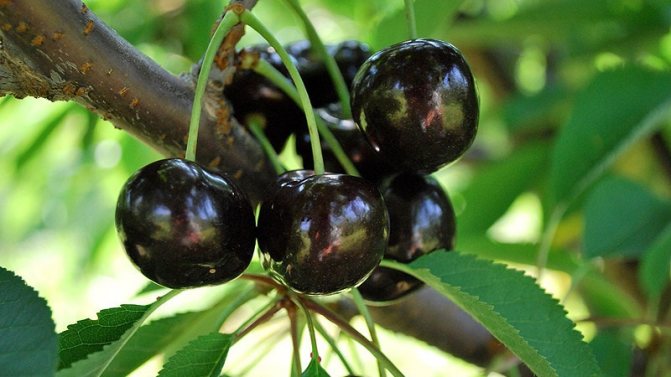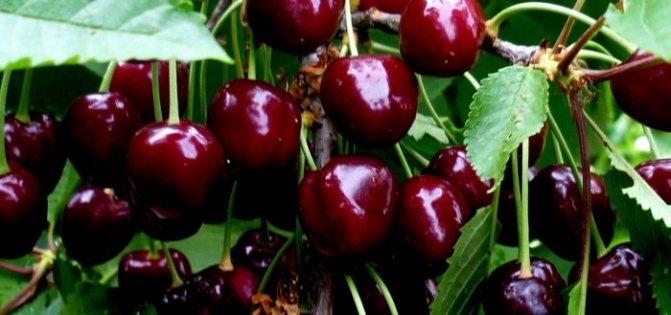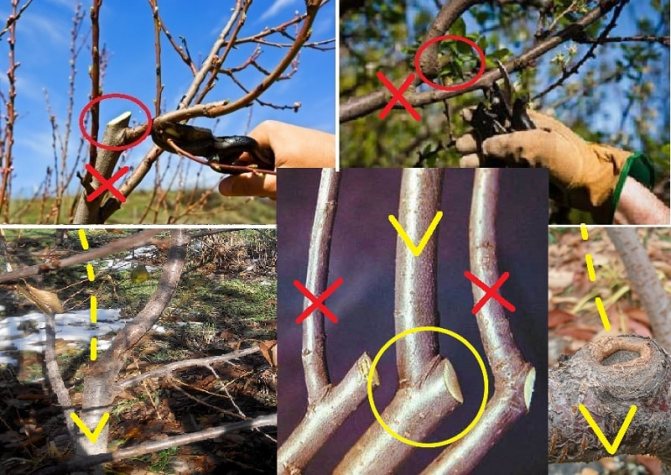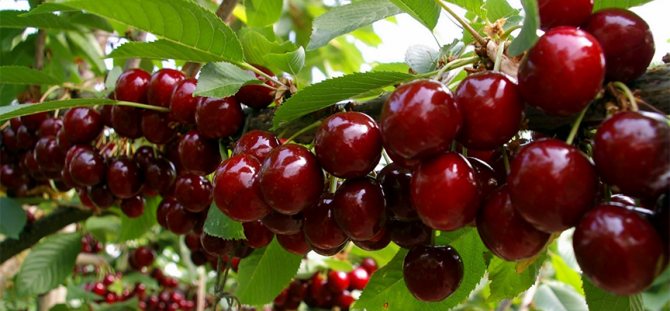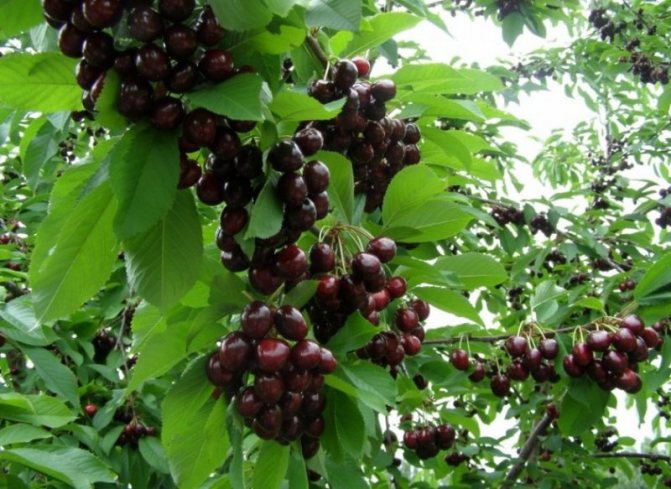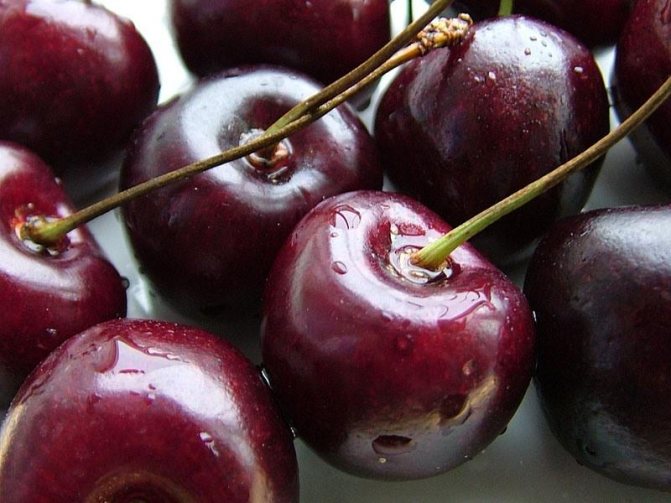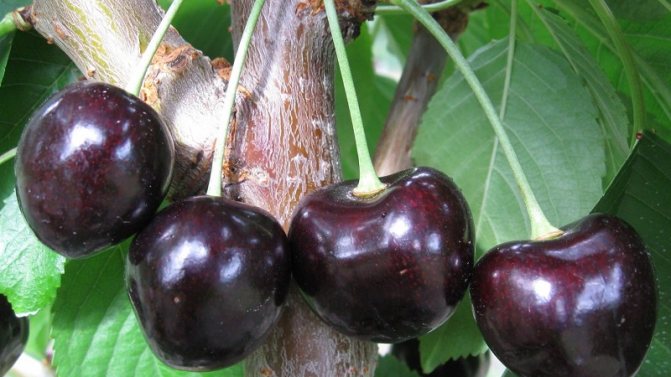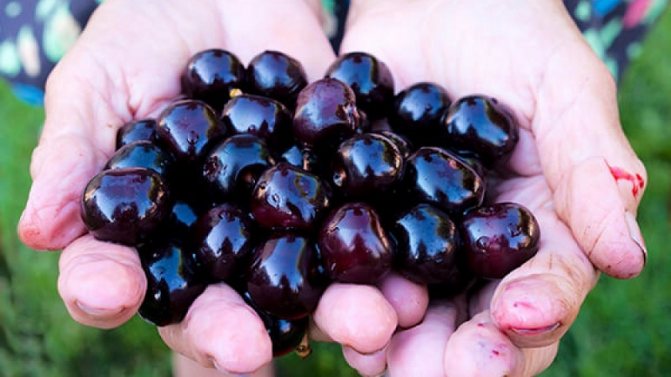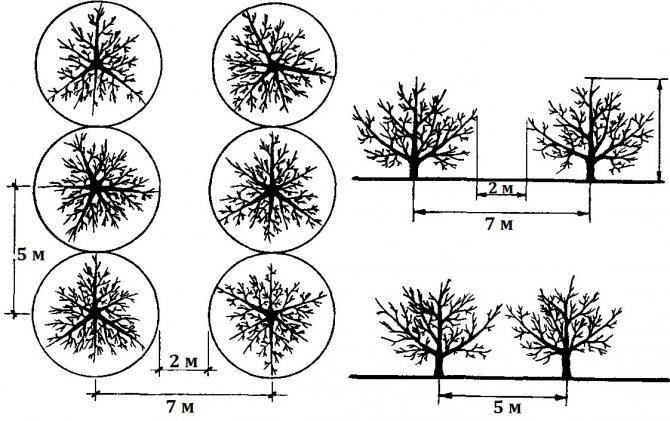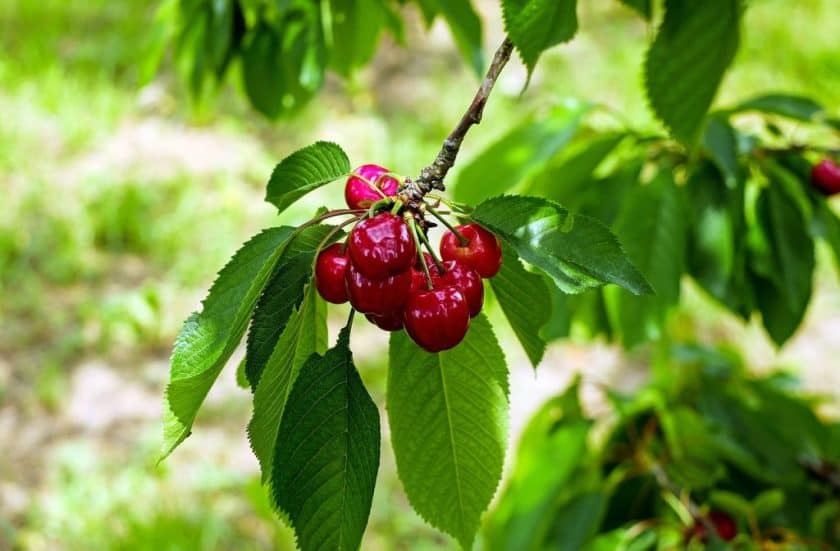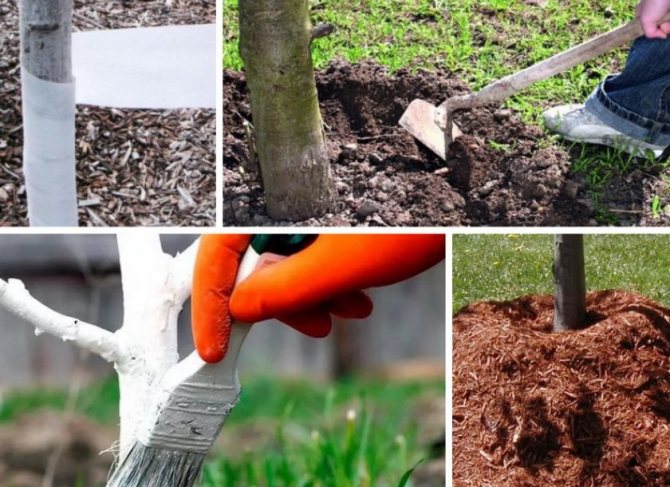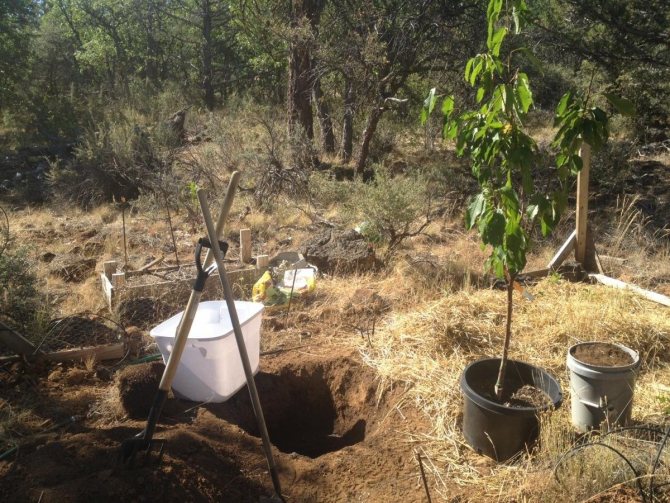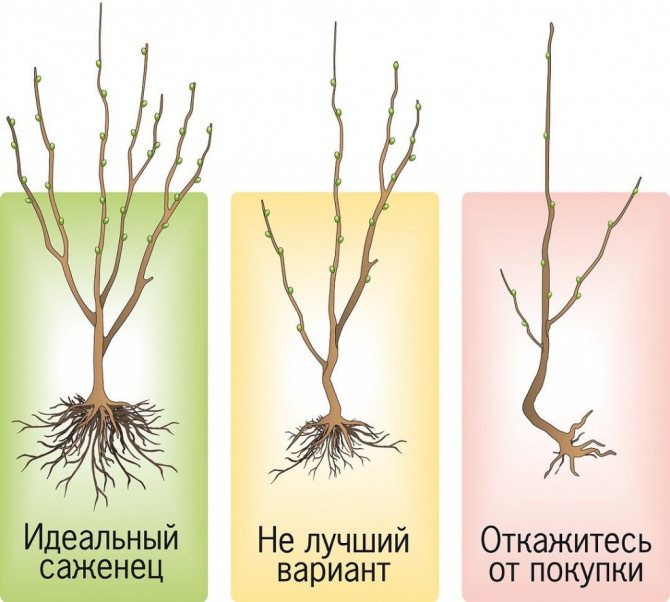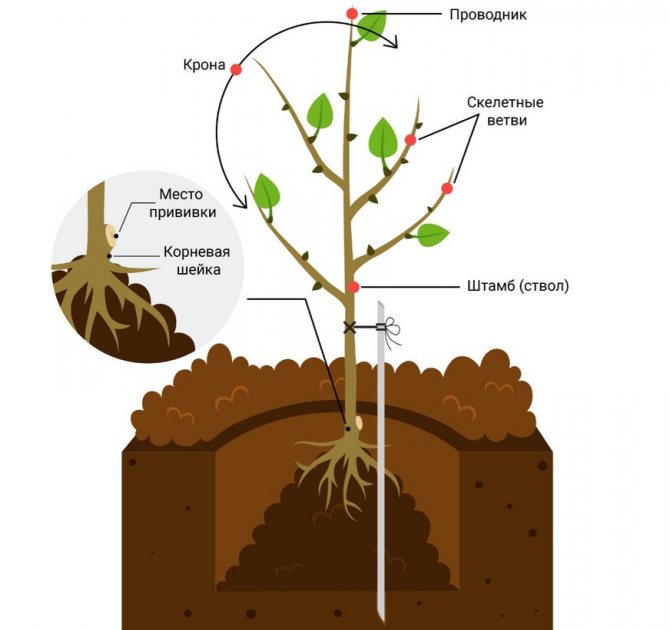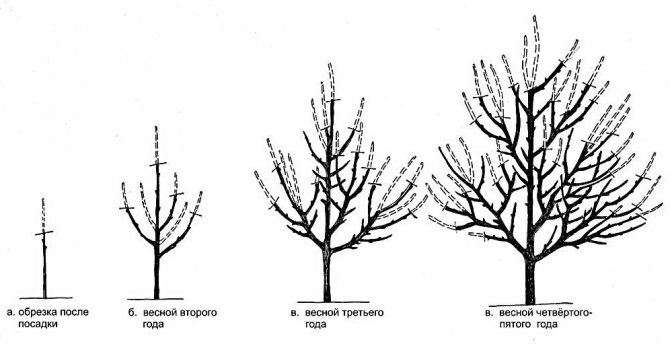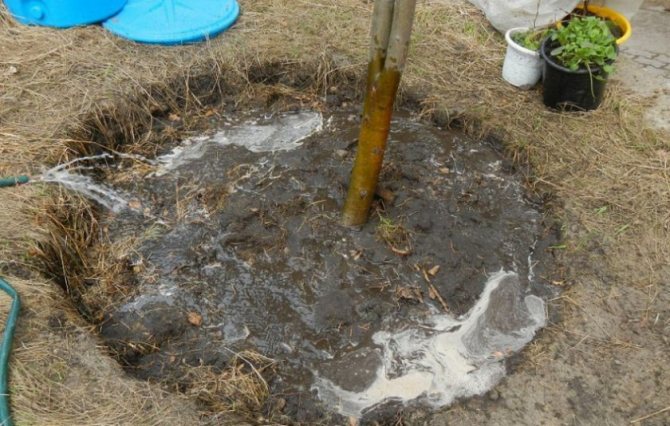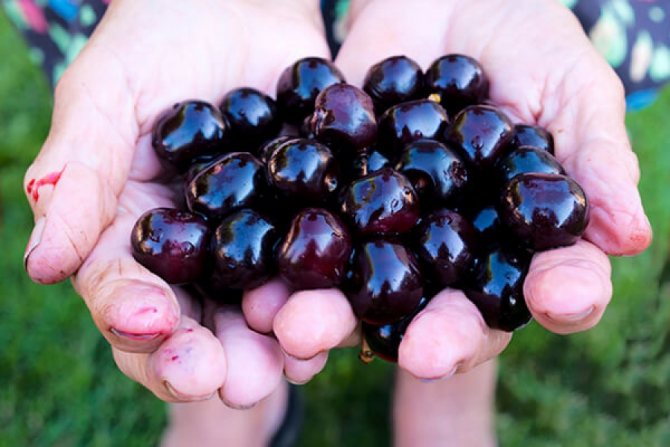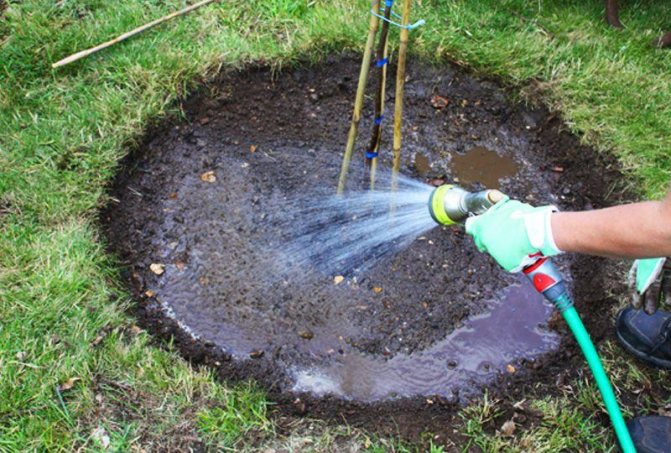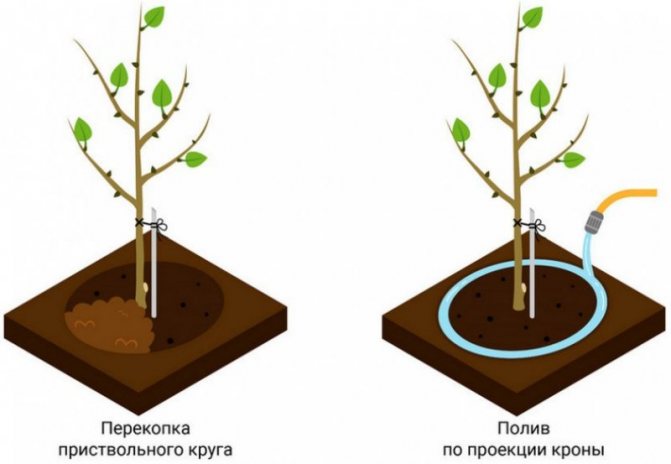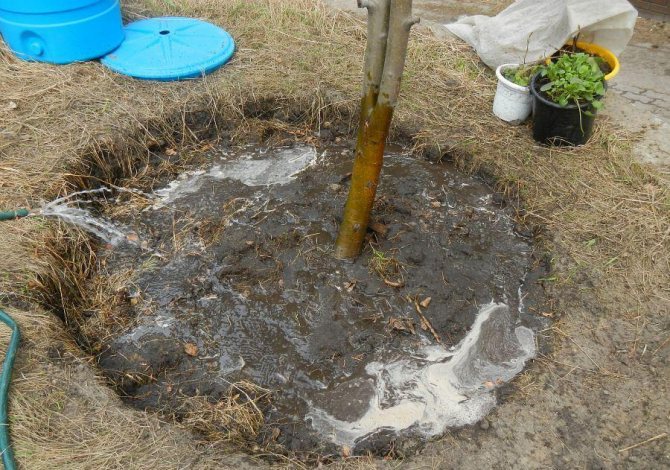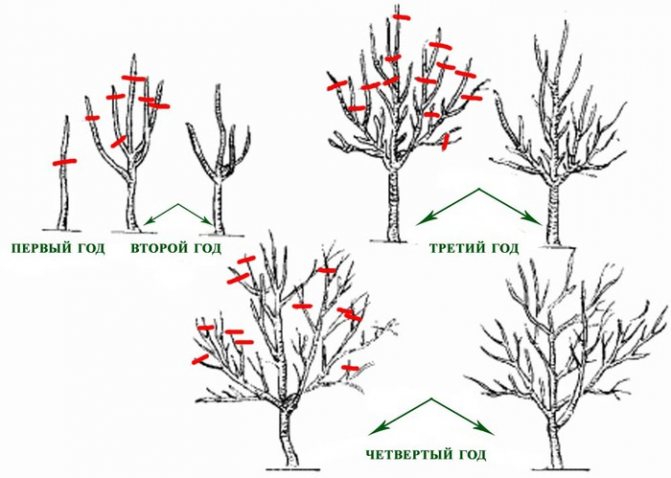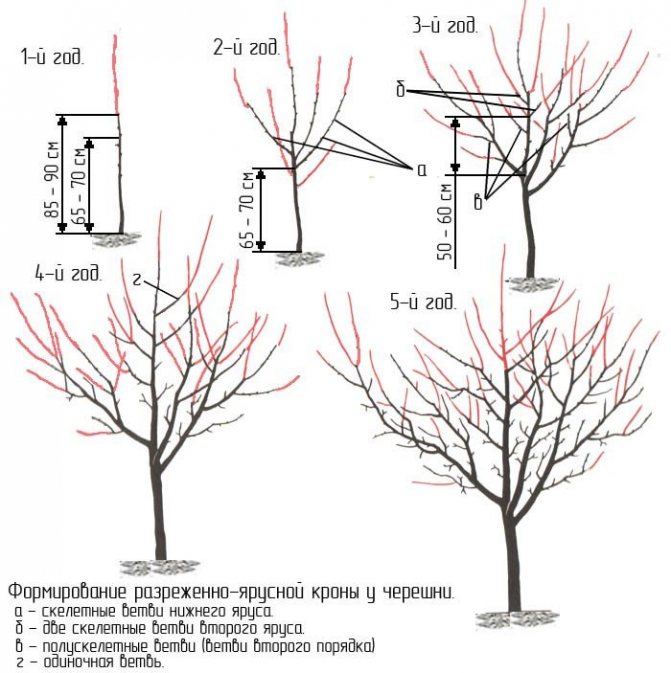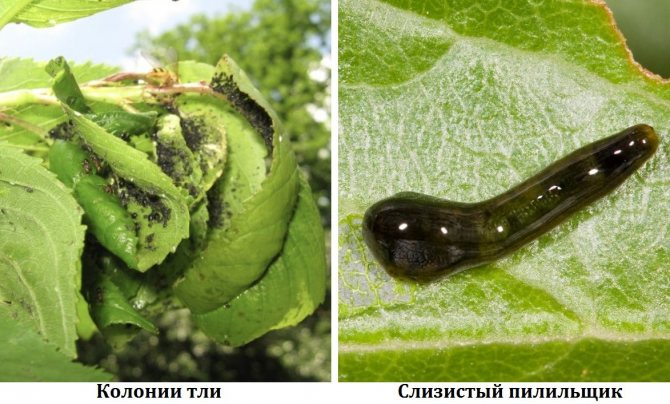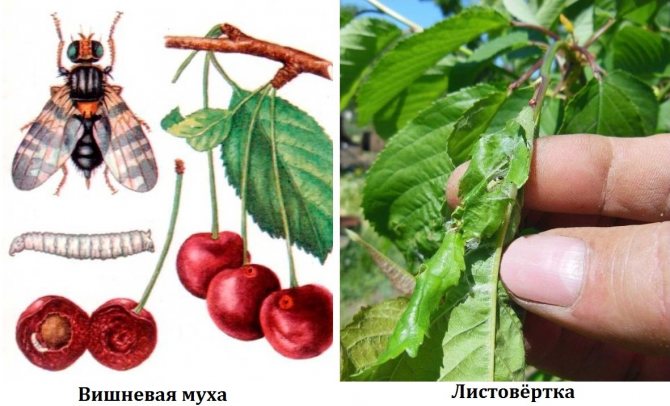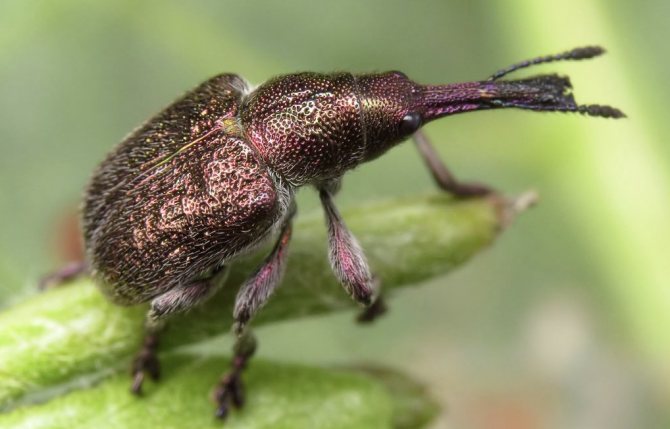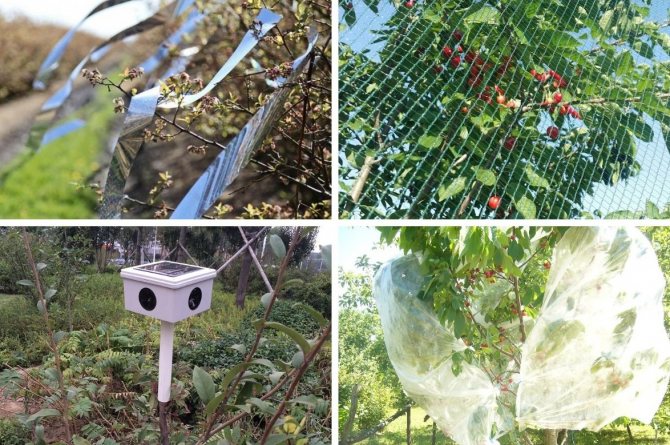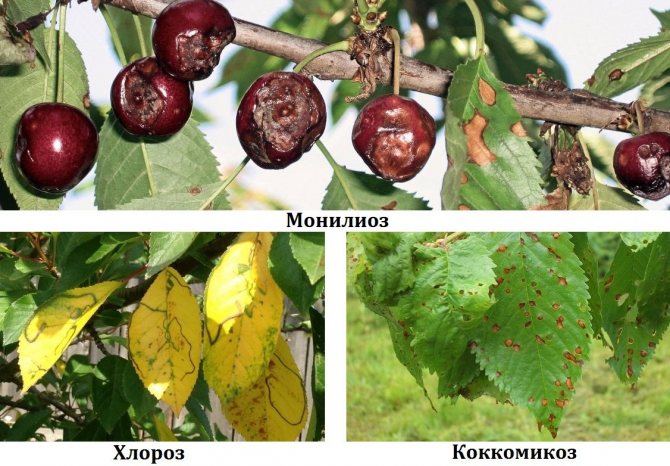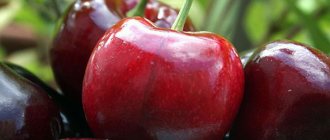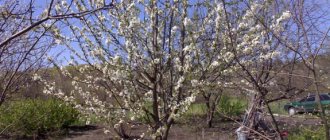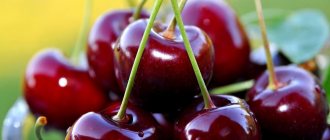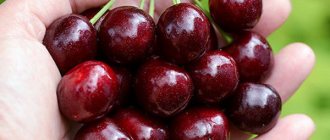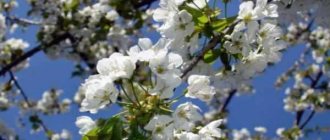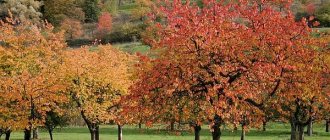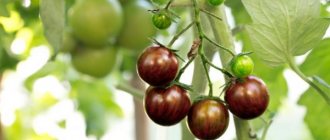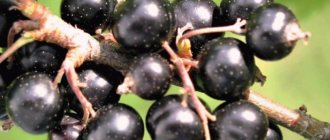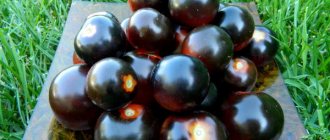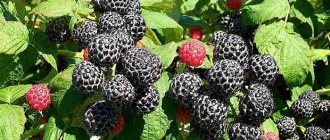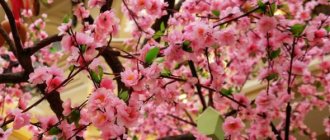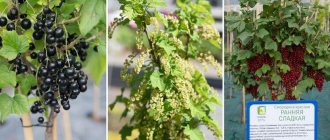Sweet cherry is thermophilic and rather capricious. Even when planted in warm regions, it is often considered a problem crop, and in Central Russia and the North-West it is grown by enthusiasts. Until the end of the last century, amateur gardeners there could not only hope to get a decent harvest, but also be sure that the tree would survive the winter. One of the first varieties suitable for planting in cool climates is the Leningradskaya Black cherry, description, photo, reviews of which confirm its ability to tolerate low temperatures well.
Description of culture
This is a medium late ripening variety. The tree has a spreading crown with elongated green leaves. The height of the tree in the Leningradskaya black cherry tree reaches 3-4 m.
Description of the sweet cherry variety Leningradskaya black:
- fruit weight from 3 to 4 g;
- the shape is wide-heart or round;
- dark red skin;
- when ripe, the fruits acquire a rich dark color;
- juicy burgundy pulp;
- sweet spicy taste with mild sourness;
- the stone is medium in size, partially separated from the pulp.
The evaluation of the tasting properties is 4–4.2 points.
Sweet cherries are tied in bunches. After ripening, the fruits stay on the branches for a long time and do not crumble.
Sweet cherry Leningradskaya is recommended for cultivation in the Central part of Russia and the southern regions of the North-West region.
The history of breeding varieties Leningradskaya black
The merit in the breeding of the Leningradskaya Chornaya variety belongs to the breeders of the Pavlovsk Experimental Station of the All-Russian Institute of Plant Industry (St. Petersburg). Before the appearance of this variety, the culture was considered traditionally southern and not adapted for cultivation in the North-West region and the fruit zones of the Non-Black Earth Region.
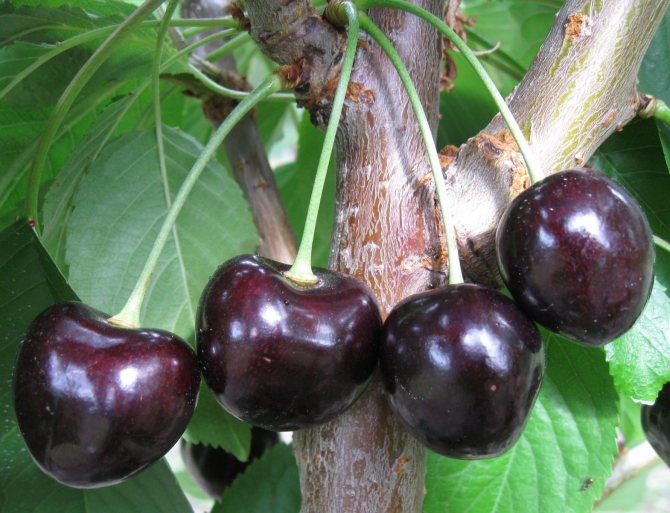
The North-West was generally considered the northern border of the cultivation of stone fruit crops on the territory of Russia. The author of the variety is the follower of IV Michurin - FK Teterev, who also bred the varieties Svetlana and Zorka.
Advantages and disadvantages
Cherry Leningrad black has many advantages:
- excellent winter hardiness;
- generous harvests;
- good taste and presentation;
- the possibility of transportation;
- early ripening;
- resistance to morbidity.
Among the shortcomings, the uneven ripening of berries is distinguished.
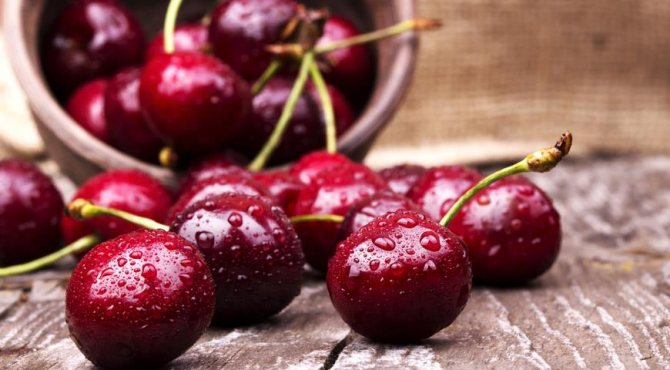

The cherry planting algorithm is very simple:
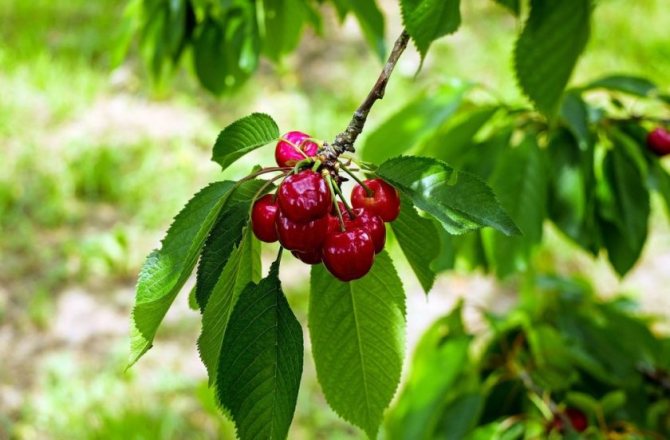

Taking care of cherries is not difficult at all:
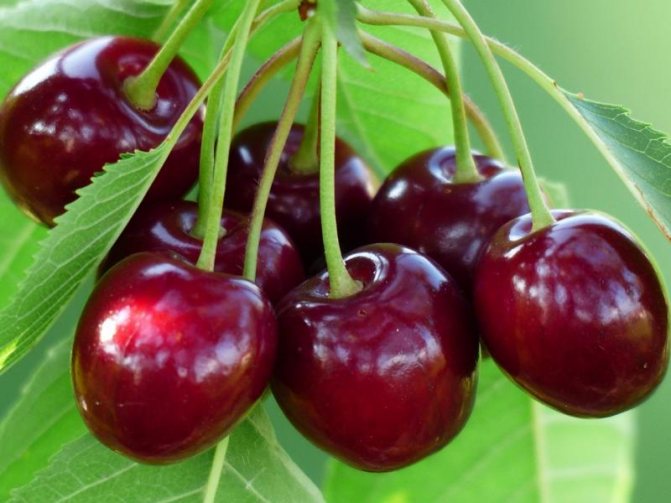

Characteristics
Before purchasing a cherry seedling, the characteristics of the variety are assessed: resistance to heat, winter frost, flowering and ripening time, harvest volume.
Drought resistance, winter hardiness
Leningradskaya is characterized by average drought tolerance. In the absence of rain, the tree is watered during flowering and at the beginning of the ripening of the crop. Stagnant moisture is detrimental to the culture.
High frost resistance of Leningrad black cherries. The tree tolerates the winter frosts typical for the Northwest region.
Pollination, flowering period and ripening times
Sweet cherry is a self-fertile culture. To form the harvest, trees are planted in groups. Pollinators for Leningrad black cherries are chosen taking into account the flowering period.
The best varieties for pollination:
- Iput;
- Tyutchevka;
- Fatezh;
- Jealous;
- Bryanochka;
- Michurinka;
- cherry Leningrad yellow or pink.
Other varieties of Leningrad varieties also have high winter hardiness and productivity.
According to the description of the variety, the Leningradskaya yellow cherry has a good taste, bright amber color and ripens at a later date.
Leningrad pink bears fruit earlier than yellow, its fruits are sweet, yellowish with a blush.
Attention! If the Leningradskaya pink cherry or another suitable pollinator grows on the site, then the seedling is placed at a distance of 2.5–3 m from it.
The flowering of Leningradskaya black cherries occurs in the middle period - early or mid-May. The fruits are harvested from late July to September.
Productivity, fruiting
The yield of the Leningradskaya black cherry variety is stable from year to year. Fruiting is extended over time, so the harvest is harvested in several stages. So that the shoots do not fall under the weight of the fruit, props are installed.
Cherry Leningradskaya black bears fruit for 3-4 years after planting. 30-40 kg of fruits are removed from each tree.
Scope of berries
Sweet cherries are suitable for fresh consumption, desserts and fruit platter. The fruits are suitable for freezing and homemade preparations: jam or compote.
Disease and pest resistance
The variety is resistant to diseases and crop pests. Constant care and preventive spraying help to avoid the spread of diseases and insect attacks.
Advantages and disadvantages
The main advantages of the variety:
- frost resistance;
- decent fruit taste;
- stable fruiting;
- low trunk, which simplifies maintenance and harvesting;
- early fruiting.
Before planting, take into account the disadvantages of the variety:
- planting of a pollinator is required;
- sensitivity to lack of moisture.
Harvesting and storage
Cherry berries ripen gradually, so the harvest takes several weeks. It is better to harvest in the morning, but after the dew has dried. If the fruits are not realized immediately, then they need to be harvested with a stalk. Store them for no more than 2 weeks in a cool room. Berries can not only be eaten fresh, but also dried, frozen, made jams, compotes.
Buds bloom on this cherry variety in the first or second decades of May. Fruit ripening is extended in time and depends on the climatic conditions in the growing region. Usually, the harvest is carried out from the last decade of July to the first decade of September.
Fruiting of this variety is stable and annual. Since a large number of ovaries are formed on mature trees, props are placed under the shoots so that they do not fall and break under the load of a bountiful harvest.
The first fruits on the Leningrad cherry tree appear in the third year after planting the seedlings in a permanent place.
Up to 35-40 kg of ripe berries can be harvested from an adult tree.
The ripening time of the fruit depends on the growing region. In cold climates, the first berries are harvested in the second half of July, in warm climates much earlier - at the end of June. Cherries ripen gradually and may take several weeks to harvest. At the same time, the berries hold well on the branches and are not prone to falling off on their own.
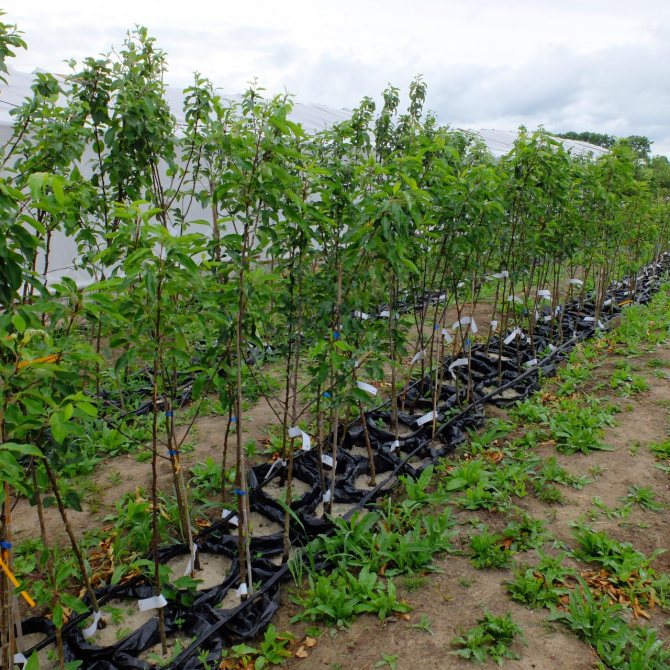

You can store fresh fruits in a refrigerator or basement with a temperature of 2-4 ° C for up to 14 days. Berries perfectly retain their taste and nutrients when frozen. They are suitable for preparations such as compotes, preserves, jams and confiture. Cherry juice can be preserved or frozen.
Yield rationing
Every gardener who has grown young trees knows how much one wants to see the fruits of a new variety as soon as possible. But there is no need to rush into this. The main task is to get a strong healthy tree. And then feast on its sweet cool fruits to your heart's content.
If the tree you planted blooms in the first year, it is best to remove all the buds.Doesn't a hand go up? Well, if it is strong and growing well, you can leave about a fifth of the resulting flowers. There is no guarantee that at least one berry will be ripe, but there is still a chance.
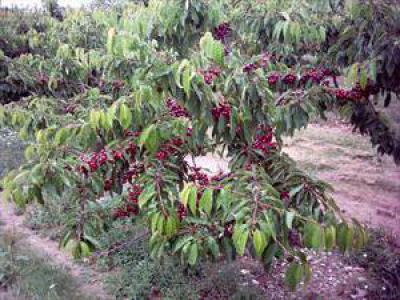

Subsequently, in the spring, if possible, cut off half of the formed ovaries (not flowers!). This will allow you to get large and tasty fruits. And the load on the tree will be less. Usually sweet cherry in the middle lane bears fruit in a year. If we normalize the number of fruits, then next year it can give a decent harvest.
Landing features
Correct planting is the key to successful cultivation of Leningradskaya black cherries. Particular attention is paid to site selection and soil preparation.
Recommended timing
In cold climates, cherries are planted in the spring, before the sap begins to flow. In the southern regions, they are waiting for the end of the leaf fall.
Choosing the right place
For culture, southern areas, flat or with a slight slope, are suitable. Cherries should not be affected by cold, strong winds. The culture is provided with constant natural light.
Important! The permissible groundwater level is 2 m and below.
The culture prefers light, fertile soil in which moisture does not stagnate. Leningradskaya develops best in sandy loam and loamy soil. River sand is added to heavy clay soil. To avoid stagnation of moisture, a drainage layer is laid.
What crops can and cannot be planted next to cherries
- Cherries are removed from apple, apricot, plum and other stone fruit trees by at least 5 m.
- Cherry, mountain ash, grape or hawthorn are placed next to the crop.
- Alfalfa, phacelia, and other melliferous plants planted under the tree attract pollinating insects.
- Leningradskaya does not tolerate the neighborhood with eggplants, tomatoes and peppers. These crops are susceptible to similar diseases and pests.
- Cherries are also placed away from raspberries, gooseberries, currants and sea buckthorn.
Selection and preparation of planting material
Saplings are purchased in nurseries or proven garden centers. For planting, choose a one- or two-year-old material with a healthy trunk and shoots.
If the roots of the tree are dried, they are immersed in water for 2-10 hours. To increase the survival rate of the seedling, you can add 2-3 drops of the Kornerost stimulant.
Landing algorithm
Planting culture:
- First, a hole is dug on the site with a diameter of 1 m and a depth of 70 cm.
- Compost, 1 kg of wood ash, 200 g of superphosphate and 40 g of potassium salt are added to the fertile soil.
- Part of the prepared soil is poured into the pit and left to shrink.
- After 2-3 weeks, a seedling is prepared, its roots are straightened and placed in a pit.
- The roots are covered with soil, which is compacted and watered abundantly.
Yield
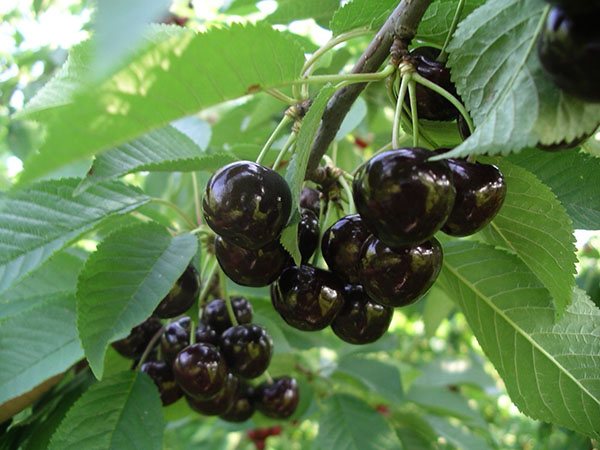

One adult tree produces 30-40 kilograms of fruit. Cherry Leningradskaya black does not possess self-pollination, therefore, for pollination, you need to plant some other sweet cherry next to this tree.
Harvesting takes place in late June and August (the colder the climate, the later the harvest). After harvesting, it is recommended to wash and dry all the berries. Store berries in a cool dry place. When warm, the berries can start to deteriorate, so after picking and drying, it is recommended to freeze the berries to extend their shelf life.
Berries can be eaten; you can also make compote, jelly, jam, jam, wine and so on from berries.
Follow-up care of the culture
A cherry tree needs watering 3 times per season: before flowering, in mid-July and late autumn before sheltering for the winter. 2 buckets of warm, settled water are poured under the tree.
Top dressing of the culture is carried out annually according to the scheme:
- in May, a mineral complex is introduced into the soil: 20 g of urea, potassium salt and superphosphate each;
- after removing the fruits, fertilizers based on potassium and phosphorus are reintroduced.
Shoots are pruned annually to form a crown and increase yields.The procedure is performed in the spring, before the buds swell, or in late autumn. Be sure to eliminate dry and frozen shoots.
Important! In young seedlings, the branches are shortened to 50 cm.The crown is formed in several tiers. The shoots thickening the crown are cut out.
The Leningradskaya black variety has high frost resistance. Winter protection is needed only for young plantings. They are covered with agrofibre and spruce branches. It is better to refuse the use of polyethylene and other materials that do not allow air to pass through.
In the spring, when the snow melts, the material is removed. To prevent rodents from damaging the cherry trunk, a special mesh or roofing material is attached to it.
General information about the variety
The main differences of this variety are its increased (although not high compared to other plants) resistance to temperature extremes, a low trunk, convenient for picking berries and a fairly high yield.
Features of the cherry variety:
- Size, weight of the fruit - large, up to 5 grams.
- Fruit color - burgundy, turning into black
- Fruit shape - heart-shaped
- Ripening period - July 15-July 20
- Productivity per tree - 30-40 kg
- Barrel height - 3-4 m
- Pollinators - other varieties of cherries (Veda, Michurinka, Tyutchevka, Leningrad red / pink, Revna) and cherries.
- Susceptibility to disease and pest attacks - Low
As you can see, the Leningrad black cherry is not capable of self-pollination, therefore, it is better to plant it in a pair with another variety or even cherry, which also has a beneficial effect on the quantity and characteristics of the crop.
It ripens, by the way, not evenly, so the berries ripened on July 15-16 can easily sag in "waiting" for ripening fruits until the beginning of September, without losing a single gram in weight and taste.
Therefore, it can be found almost everywhere. And, most likely, it will be perfect for you! The range of using the berries of the Leningrad black cherry is quite wide - juices, preserves, compotes and just freezing. It is also possible to use in the preparation of wine and various medicinal tinctures.
For the first time they started talking about Cherry Cherry at the end of the 20th century. The variety was bred by A. Ya. Voronchikhina. It quickly spread to the southern regions and other countries of the Middle East. Among the main advantages are:
- resistance to low temperatures;
- not picky about the type of soil;
- undemanding to the implementation of complex care procedures.
Gardeners are attracted by resistance to high, uncharacteristic temperatures up to 35 ° C for the temperate climatic zone. Cherries are able to withstand direct sunlight. The variety thrives on almost any substrate. For fruiting, it is not necessary that the tree grows on black soil.
Description of the plant
Leningrad cherry, as this variety is also called, is a relatively small tree that reaches a height of no more than 4 m. The crown is fluffy, which helps the species cope with excessively high temperatures and sunlight.
Features of the fetus
The berry is massive. One weighs 6–7 g. Skin color is almost black. Looking at the berry, many come to the conclusion that it is a sweet cherry, since outwardly there is indeed a similarity. The pulp has a pleasant dark color and is characterized by sweetness with subtle sour notes. The seed inside the berry is small and easily separates from the pulp.
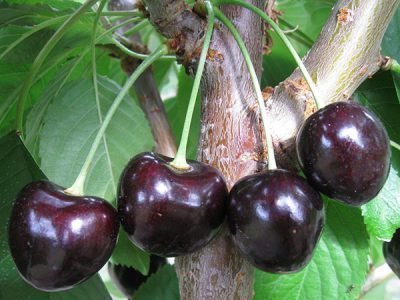

The description indicates that wild cherries are ideal both for fresh consumption and for making juices, compotes, preserves and other dishes and drinks.
Diseases and pests, methods of control and prevention
The most dangerous diseases of sweet cherry are indicated in the table:
| Name | Symptoms | Ways to fight | Prophylaxis |
| Clasterosporium disease | Brown spots on the leaves with a dark border. As a result, the leaves fall prematurely, the fruits dry out. | Removal of affected parts, spraying trees with a solution of copper sulfate. | · Spraying in early spring with Nitrafen solution. · Removal of dry leaves. |
| Moniliosis | Leaves, flowers and fruits dry out before time. | Sick shoots are cut out. The tree is sprayed with Bordeaux liquid. |
Cherry pests and methods of dealing with them are indicated in the table:
| Name | Signs of defeat | Ways to fight | Prophylaxis |
| Aphid | Aphid larvae feed on the sap of tree leaves. As a result, the leaves are deformed, the yield of the tree decreases. | Treatment of shoots with the drug "Confidor". |
|
| Cherry fly | Larvae damage flowers and fruits. | Spraying with Actellik solution. |
Difficulties of growing cherries in the Northwest
In the Soviet Union, the main focus of breeders was on crops that were grown on an industrial scale, rather than in small private gardens. Therefore, initially thermophilic cherries could be seen south of Voronezh and Donetsk, in Moldova. There were simply no varieties for the middle zone, and even more so for the northwestern zone. Since the breeding work takes more than one year, and it is followed by field trials of new plants, officially there are no cherry varieties for the northwest in the State Register until then.
A natural obstacle in the way of culture is the lack of self-fertile varieties of sweet cherry for the Leningrad region. To ensure cross-pollination, you need to plant at least 2-3 winter-hardy varieties in the neighborhood, otherwise the number of ovaries on the branches is reduced by 90-95%.
And yet, summer residents near St. Petersburg, Kaliningrad and other regions of the northwestern zone do not despair. Several varieties have already proven their endurance, frost resistance and productivity in practice, and enthusiastic gardeners borrowed a number of varieties from their colleagues in the Central region of Russia.
Pollinators
Unfortunately, she is a self-fertile tree. It will bloom, but it will not yield a harvest. For the berries to set, you need to plant another variety of cherries next to it. At the same time, it should bloom at about the same time as the Leningrad black cherry. Pollinators have the same brand: Leningradskaya yellow and Leningradskaya pink.
Good pollinators for her will be Fatezh, Chermashnaya or Red dense. It is believed that cherries can act as a pollinator for cherries, although they are usually not pollinated.
Frost resistance
One of the qualities for which the Leningrad black cherry is valued is winter hardiness. But she can still freeze slightly, especially at a young age. Reviews recommend mulching the trunk circle with horse manure. Of course, if you can get it.
It is recommended to wrap the stem of a young tree with a special covering material or adapt old nylon stockings for this. The main condition: it is necessary that the shelter allows air and moisture to pass through.
In early spring, the trunk is treated with a solution of slaked lime. It protects the bark from sunburn and destroys pathogens and small pests.
The same stockings can be used for sun protection. And it is better to wrap them around as much of the trunk and branches as possible.
Cherry Leningradskaya black grows well in the south of the Non-Black Earth Region and the entire territory of the Central Black Earth Region.
How to plant Leningrad black cherries
When planting the Leningradskaya Black variety, a number of factors are taken into account: the condition of the soil, the illumination of the site, the climatic conditions in the region, the quality of the seedling.
How to choose a seedling
For seedlings, they turn to nurseries or proven centers. When choosing a plant, the condition of the shoots and the root system is assessed. They should be free of mold, cracks, lichen and other defects. One- and two-year-old seedlings with a height of 80-120 cm take root best of all. From the assortment, choose cherries with a pronounced conductor and 3-4 shoots. If the roots are a little overdried, then the tree can be saved.The root system is kept in clean water for 5-8 hours.
Landing time and scheme
The timing for planting the Leningradskaya Black variety depends on weather conditions. First, they wait for the autumn leaf fall. If the weather is stable without cold snaps, then work is started. In 2-3 weeks, the plant will have time to adapt and successfully overwinter. If frosts are expected, planting is postponed to spring. Saplings are buried in the area, sawdust and peat are poured on top for insulation.
Advice! The ideal place for cherries is sunny, sheltered from the wind, with fertile soil.
The culture is not planted in lowlands, as well as in peat bogs, swampy, sandy and clayey areas. Sweet cherry prefers sandy loam and loamy soils, which are good for moisture and air. The tree is placed on a hill and level area, on the south or west side. The seedling is removed from large trees by 5 m. Closer proximity with cherries and other varieties of sweet cherries is allowed.
Pit preparation
Regardless of the chosen planting dates, the pit for the culture is prepared in advance. For 3-4 weeks, the soil shrinks, which damages the seedling. If the work is planned in the spring, then the pit is prepared in the fall. If the soil on the site does not allow moisture to pass through well, then a drainage layer of crushed stone or expanded clay is arranged at the bottom of the pit. Coarse river sand is added to the substrate.
Sweet cherry planting algorithm:
- Dig a hole with a diameter of 0.7x0.7 m to a depth of 0.6 m.
- The pit is half filled with a substrate: black soil, humus, 180 g of superphosphate and 90 g of potassium salt.
- Then 2 buckets of water are poured out and the hole is left for several weeks.
- Before planting, cherries are poured into fertile soil in the form of a small hill.
- The plant is planted on a hill, the roots are sprinkled with black soil.
- The soil is well compacted and 2 buckets of water are poured under the seedling.
Growing
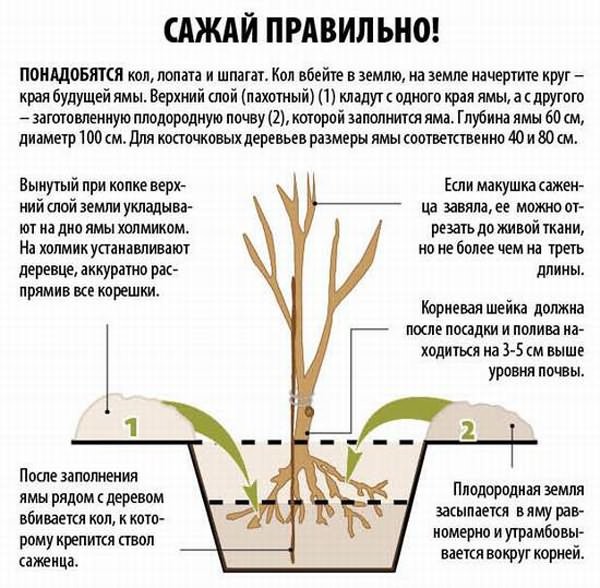

The rules for growing Leningrad black cherry look like this:
- For planting, you need to use soils with neutral acidity. The landing site should be well lit by the sun.
- Cherries with a bare root system should be planted in early spring; planting a tree in a container should be done in summer and September.
- In the case of grafting, cherries must be placed at a height of at least 7-8 centimeters above ground level.
- Before planting a seedling, you need to dig a hole, the depth of which should be 30-40 centimeters. After that, you need to place the seedling in a hole and cover it with earth (you can add a little humus and 1 spoonful of superphosphate to the soil so that the tree grows better). After planting, you need to water the tree with 1 bucket of water.
Planting cherries in the Leningrad region
Its development and fruiting depends on the correct planting of cherries. In the Leningrad Region, a suitable place is chosen for culture, the composition of the soil is improved and a seedling is prepared. A planting pit is prepared on the site, which is filled with fertile soil and fertilizers.
When to plant cherries in the Leningrad region
The best time to plant cherries in the region is autumn or spring. Before starting work, they are guided by weather conditions. If the autumn turned out to be dry and warm, then the planting is performed at the end of September or October. The seedling will have time to adapt to new conditions and take root. Then the autumn cold snaps will not harm him, and in the spring new leaves and shoots will appear.
If early cold snaps have occurred in the Leningrad region, then the landing is postponed to the spring. For the winter, the plants are shallowly added to the site, sawdust is poured on top and spruce branches are placed. In the spring, when the snow melts, the seedlings are taken out of the shelter and planted in a permanent place. It is important to carry out planting work before the buds swell.
Gardeners reviews
Summer residents and gardeners are attracted by this variety for its high winter hardiness and abundant harvests that trees give, despite adverse weather conditions.Especially, this species is popular in the Leningrad region, but in other regions you can also find the Leningrad black.
Tamara, 44 years old
“Leningrad black has been growing on my site since time immemorial. There were never any punctures. It always yields a crop, even in 2003, when there was a harsh winter, and some of the buds on the tree froze. The berries are of excellent quality, and I have never seen such an abundance in any variety. "
Stepan, 63 years old
“A good winter-hardy variety that pleases with a stable harvest of tasty high-quality berries. The tree tolerates even the most severe cold weather and never falls ill with anything. The only negative is the need to plant a different variety next to it as a pollinator. "

